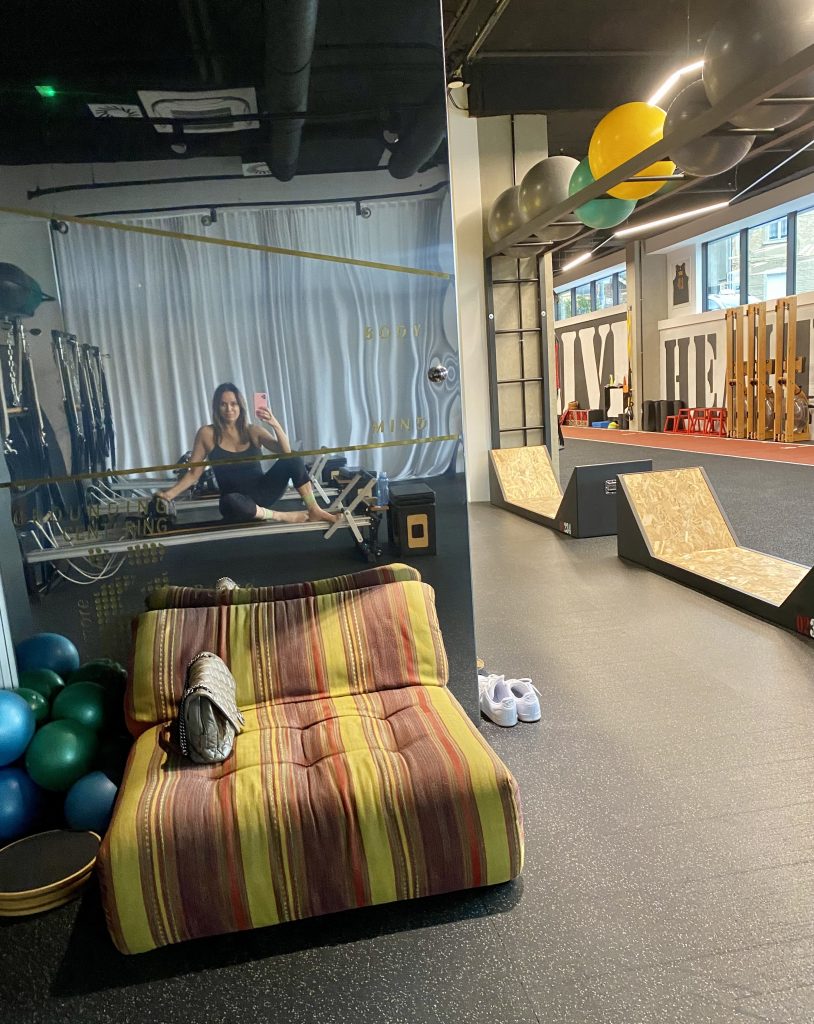Benefits of exercise PILATES

In the last two years, either because of the influence of celebrity culture and the exercises you performed at home or because of the influence of TikTok, Pilates has become one of the most popular types of exercise.
Despite this, there is nothing “new” about his practice, which is aimed at strengthening the body and elongating muscles through exercises focused on core and breathing. The original way of exercising dates back to the 1920s and was invented by a German physiotherapist and trainer, Joseph Pilates. Today, Pilates is practiced by thousands of satisfied people who swear by the results, including some famous ladies like Joan Collins, the Kardashian clan, Hailey Bieber and Kate Hudson.
But before you book your first class, read everything you should know.
What is Pilates?
Pilates is a type of exercise that primarily builds long, spindle-shaped muscles, focusing on movements that stimulate flexibility and strengthen the “core”. It also focuses on strengthening the trunk while practicing lateral breathing.
Despite some common misconceptions, Pilates is not at all so similar to yoga. Although both types of exercise are about connecting mind and body, most similarities stop governing there. For one thing, yoga originated long before, while Pilates was introduced into practice in the 20th century. Yoga is focused more on meditation, while Pilates is more of an exercise that uses movements to strengthen mainly the trunk and the whole body.
Pilates is performed at a much faster speed than yoga, which also makes it more challenging, and special attention is focused on lateral sucking, movement control and strength.
What are the positive effects of Pilates?
Pilates can improve your posture, prevent injuries, help rehabilitate and heal injuries, improve your sporting achievements in other sports (professional athletes) or fitness activities, and build a strong, better balanced body and spine, which will ultimately help the body’s better functioning and mobility in everyday life.
These are just some of the scientifically proven benefits of how Pilates has a positive effect on your body. The positive effects are also felt in the form of improved breathing and a better general mental state of a person who regularly practices Pilates.
Is equipment needed?
If you start searching the internet for what you need to practice Pilates, you might falter when you see all these props used in performing different exercises. But to begin with, you can breathe a sigh of relief because you really only need a quality “mat”, and “mat Pilates” is one of the most demanding ways of practicing Pilates, since it uses the weight of your own body as resistance.
It is this advantage that makes Pilates the perfect way to exercise at home, and online you can find a lot of different expertly guided programs by certified trainers that will bring Pilates to your living room or space that you choose.
If you like this way of exercising, find a Pilates training studio where you will delve deeper into different exercise methods with different props such as ball, Pilates ring, rubber (miniband) and many others. In addition to small props, Pilates is performed in a well-equipped studio on larger devices such as our favorite reformers (spring bed), barrel and chair, and this will surely turn you into a Pilates enthusiast as soon as you try it.

What does a Pilates class look like?
Before coming to the first class, it is desirable to know the basics such as e.g. what to expect, how to dress and the rules of conduct in class.
We would recommend that you wear something that will make you feel comfortable, such as. sports leggings due to the precision of movement and socks preferably anti-slip.
The schedule of the class depends on the work plan of the study you are visiting and the instructor who works with you, but at the beginning it is common to warm up in conjunction with the implementation of correct breathing exercises on which the emphasis is placed throughout the hour. This is followed by a series of exercises that will move your spine in all four directions: flexion, extension, lateral flexion and rotation. These exercises will also move your body in all directions in a controlled manner, and in this way you will do the exercise of the whole body every time.
As with every hour of organized exercise, it is important to follow rules such as arriving on time, or a few minutes earlier in order to conduct breathing exercises and participate in warm-ups, and not to delay others. It is also important to bring a bottle of water to stay hydrated and at the end of the hour clean/disinfect the appliances you used.
Are there any special safety restrictions?
Like any exercise program, Pilates practice involves a healthy person or if there are any disturbances, it is necessary to consult a family doctor. Your Pilates intructor should be aware of your health condition, if there are any painful conditions, movement restrictions or disturbances to adjust your exercise system.
If you are pregnant or have any serious disorders, it is recommended to join the group for pregnant women, or attend private lessons in order to adapt the exercise system to individual needs.
You can expect slight muscle inflammation especially after the first hours of exercise or after the period of absence, but stretching exercises after an hour greatly reduce tension and muscle pain. Of course, it is recommended to rest and a sufficient amount of fluids, and we are sure that you will enjoy Pilates with each hour worked more and more.




